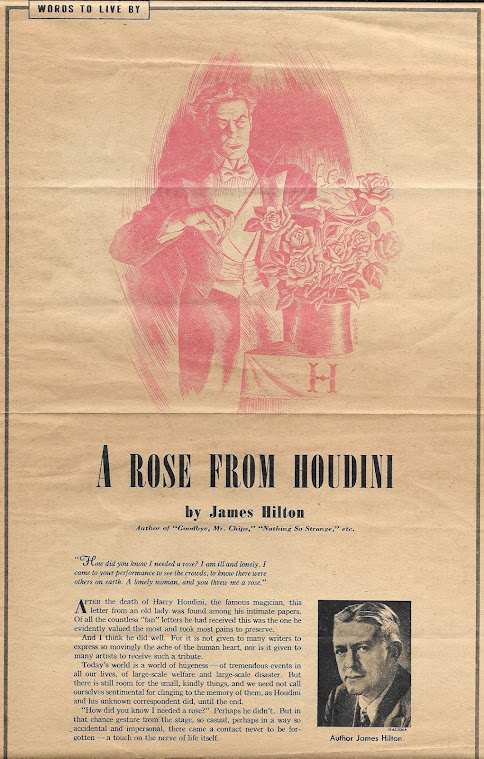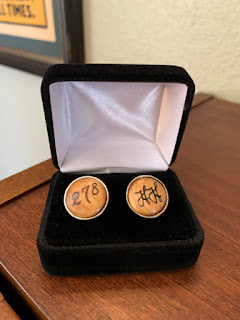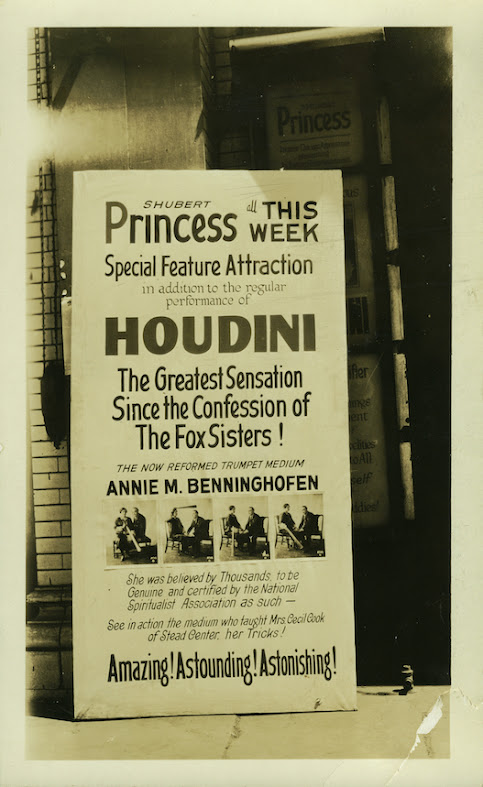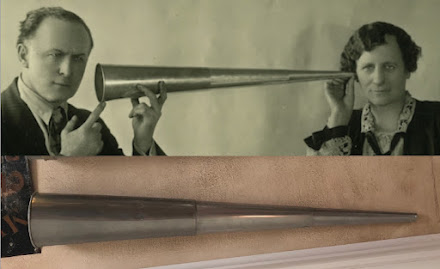The below photo is one most people are familiar with. It shows Houdini in a car outside the Circus Busch in Berlin, Germany. This photo appears in several books. Here's how it appears in Houdini The Untold Story by Milbourne Christopher with a typical caption.
I've been looking at this photo for 40+ years, but only recently discovered that I have been looking at it all wrong! This image has never been properly identified for what it is. Now thanks to Eric Colleary and our friends at the Harry Ransom Center, I can finally share what's really going on here.
The first surprise is that Houdini is not the focus of this photo, nor is he the reason people have gathered at the theater this day. The star is the car.
Below is an unpublished photo from the Harry Ransom Center's Houdini collection taken at the same time as the more familiar image (which I can now date as 1908). Here the car is featured prominently. The high resolution also shows up new details, including an intriguing notation on the car's hood: "New York-Paris".
I ran all this past magician David Charvet, who knows classic cars as well as he knows magic. David was able to identify this car, a German Protos, as Germany's entry into the famed 1908 New York-Paris auto race. This was a huge international event that was covered by the world press for five months. The German Protos was actually the first to cross the finish line. However, due to time penalties incurred during the race and other circumstances, the American car was declared the winner.
The driver of the Protos was Hans Koeppen (right). I'm pretty sure that's him behind the wheel in both these photos. Koeppen was a national hero; so much so his unique toothbrush mustache became the fashion among service men at that time, including, reportedly, a young Adolph Hitler.
So what people are gathering outside the Circus Busch to see is the famous Protos race car and its famous driver. Houdini, who was playing the Circus Busch at this time, seems to have simply been along for the ride. I love this kind of thing! It's also a perfect example of one of the untold stories of Houdini in Germany.
One thing I haven't been able to nail down is exactly when this photo was taken. Houdini played the Circus Busch from August 31 to November 1, 1908, and the Protos was touring Germany at this time. So it would be sometime within those three months.
But, wait, it gets better! According to Wikipedia, the famous race car is still around and currently on display at the Deutsches Museum in Munich. Below is a pic. Looks like it lost its fenders and headlights, but that "Protos" grill is unmistakable.
I encourage you to read up on the 1908 New York to Paris race, which is a wild story in itself. It was also the inspiration for the 1965 comedy, The Great Race, starring Tony Curtis as the Houdini-like "The Great Leslie" (whom we first meet doing a suspended straitjacket escape). Below is a pic from the movie showing Curtis behind the wheel of his own "New York-Paris" race car. So a lot of cosmic overlaps here!
Thanks to Eric Colleary of the Harry Ransom Center for allowing me to share this rare image. Also thanks to David Charvet for his help in identifying the Protos.
BONUS: Those who subscribe to my newsletter will receive a variant Houdini-Protos image from the Harry Ransom Center collection as a WILD ABOUT HARRY EXTRA this Sunday. If you don't yet subscribe you can do so HERE.
Related:
Related:


































.jpg)


















